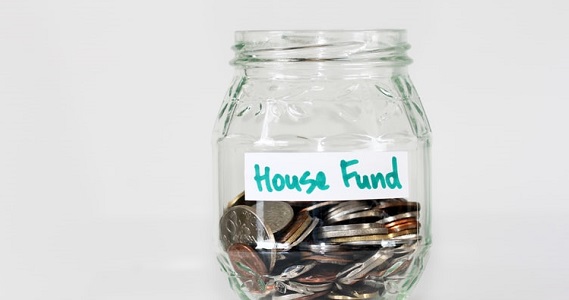Before you can step onto the property ladder and buy your first home, you’ll likely have to do some serious saving to build up a deposit. Here are some things to consider that can help get you started, and on the road to home ownership sooner.

Work out your current situation
It might sound obvious, but it’s easier to reach a savings goal when you know where you’re starting from. Understanding your current financial situation – what your income and expenses are – will help you set a budget. You can then track your spending and save a set amount each week, fortnight or month towards your deposit. You can do it in as little as three steps.
Find out how much you can borrow
Knowing how much you might be able borrow can help you figure out how much home loan deposit you’ll need to save. . Remember though, the amount calculated is only an estimate based on the income and expenses you put in. It’s likely to differ from the amount a lender formally approves you for when the time comes.
It’s also important to remember that interest rates do change, so think about building a buffer into the repayment amount so that you’d still be able to cover your loan repayments if interest rates rise.
Figure out how much deposit you need
Once you know roughly how much you might be able to borrow, compare this with the cost of your ideal property and it can give you a good ballpark figure to aim for. The size of the deposit you need for a home loan is typically 20%. Although in some circumstances it may be possible for home buyers to have as little as a 5% deposit.
Understanding the loan to value ratio and whether you’ll need to pay lenders mortgage insurance can also help you work out how much you can afford to spend when buying a property.
When you’re closer to reaching your house deposit goal, you can speak to a lender about conditional approval for a home loan.
Don’t forget the other upfront costs associated with buying a home such as legal fees, building and pest inspection fees, stamp duty, moving costs and insurances.
Know how long you’ll be saving for
Of course, this all depends on how much you can afford to save each month. But every dollar you can put towards your savings plan means growing a bigger deposit or saving money for less time.
As an example:
|
Purchase Price |
20% deposit |
Amount saved each month |
Number of months to reach deposit goal |
|
$300,000 |
$60,000 |
$2,000 |
30 |
|
$500,000 |
$100,000 |
$2,500 |
40 |
|
$700,000 |
$140,000 |
$3,000 |
47 |
|
$1,000,000 |
$200,000 |
$3,500 |
57 |
Depending on your financial circumstances, a separate savings account for your home loan deposit may be an option you want to consider. It can pay to shop around and find an account that’s right for you, whether it be a regular savings account or a term deposit.
Find out if you’re eligible for first home buyer help
If you’re a first home buyer, you might be eligible for the First Home Owner Grant (FHOG). It’s an Australian state and territory-based scheme that aims to help first home buyers with the cost of purchasing a residential property.
Tips to save a deposit faster
-
If it’s an option, you might consider temporarily moving back home with your parents, so you can save on rent.
-
Free up extra cash by cutting down on unnecessary spending – takeaways, another pair of sunglasses, or monthly subscriptions you don’t use are a good place to start.
-
Make additional income by selling things you no longer use or earning money through a side hustle.
-
Cut back on food waste and plan your meals so you spend less on groceries.
-
Review your utility providers to make sure you have the best deal.
-
Defer any big purchases or upgrades like cars or appliances.
Please contact us on Phone 02 9906 6566 if you seek further discussion on this topic.
Important: This information is provided by AMP Life Limited. It is general information only and hasn’t taken your circumstances into account. It’s important to consider your particular circumstances and the relevant Product Disclosure Statement or Terms and Conditions, available by calling Phone 02 9906 6566, before deciding what’s right for you.
All information in this article is subject to change without notice. Although the information is from sources considered reliable, AMP and our company do not guarantee that it is accurate or complete. You should not rely upon it and should seek professional advice before making any financial decision. Except where liability under any statute cannot be excluded, AMP and our company do not accept any liability for any resulting loss or damage of the reader or any other person. Any links have been provided for information purposes only and will take you to external websites. Note: Our company does not endorse and is not responsible for the accuracy of the contents/information contained within the linked site(s) accessible from this page.


